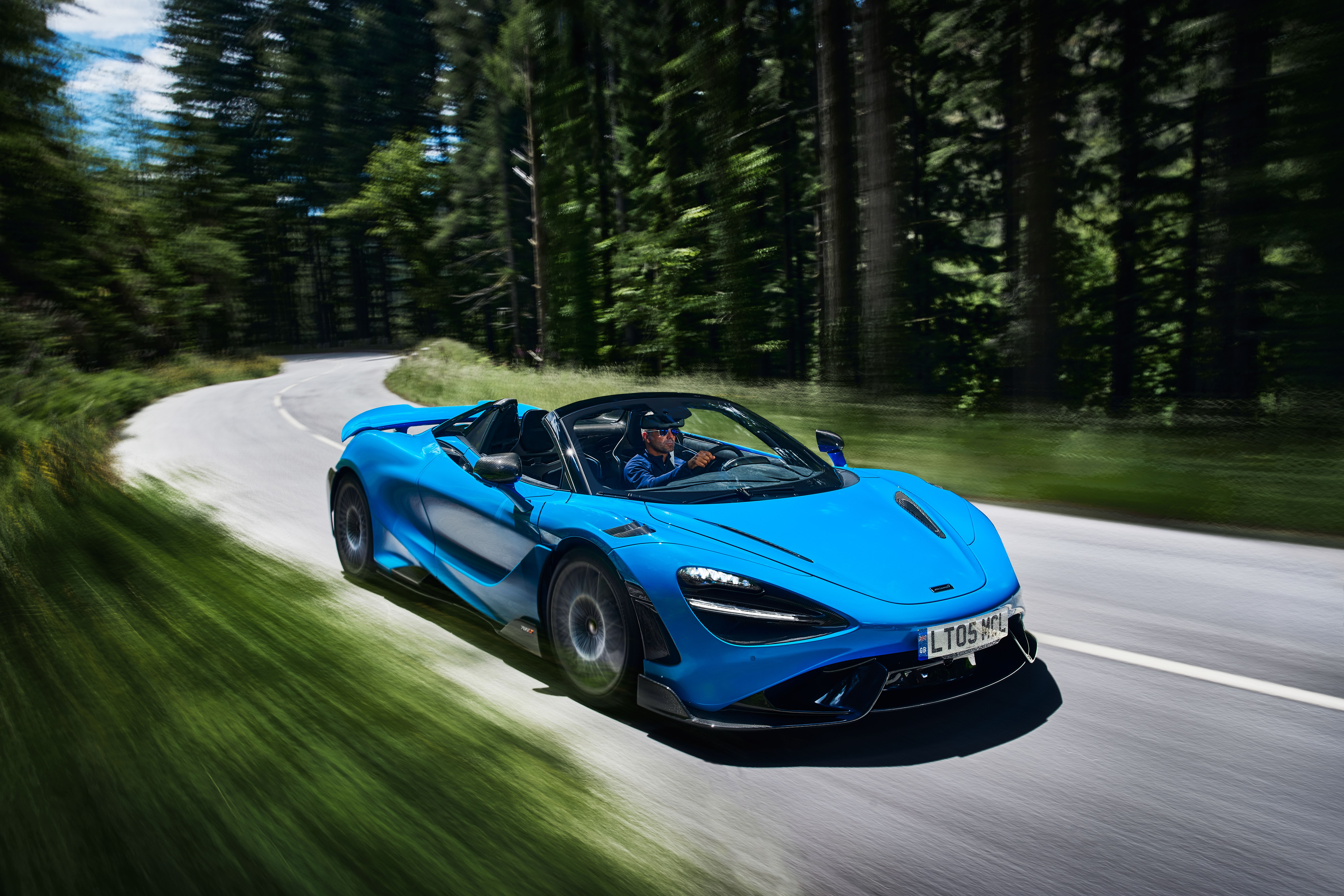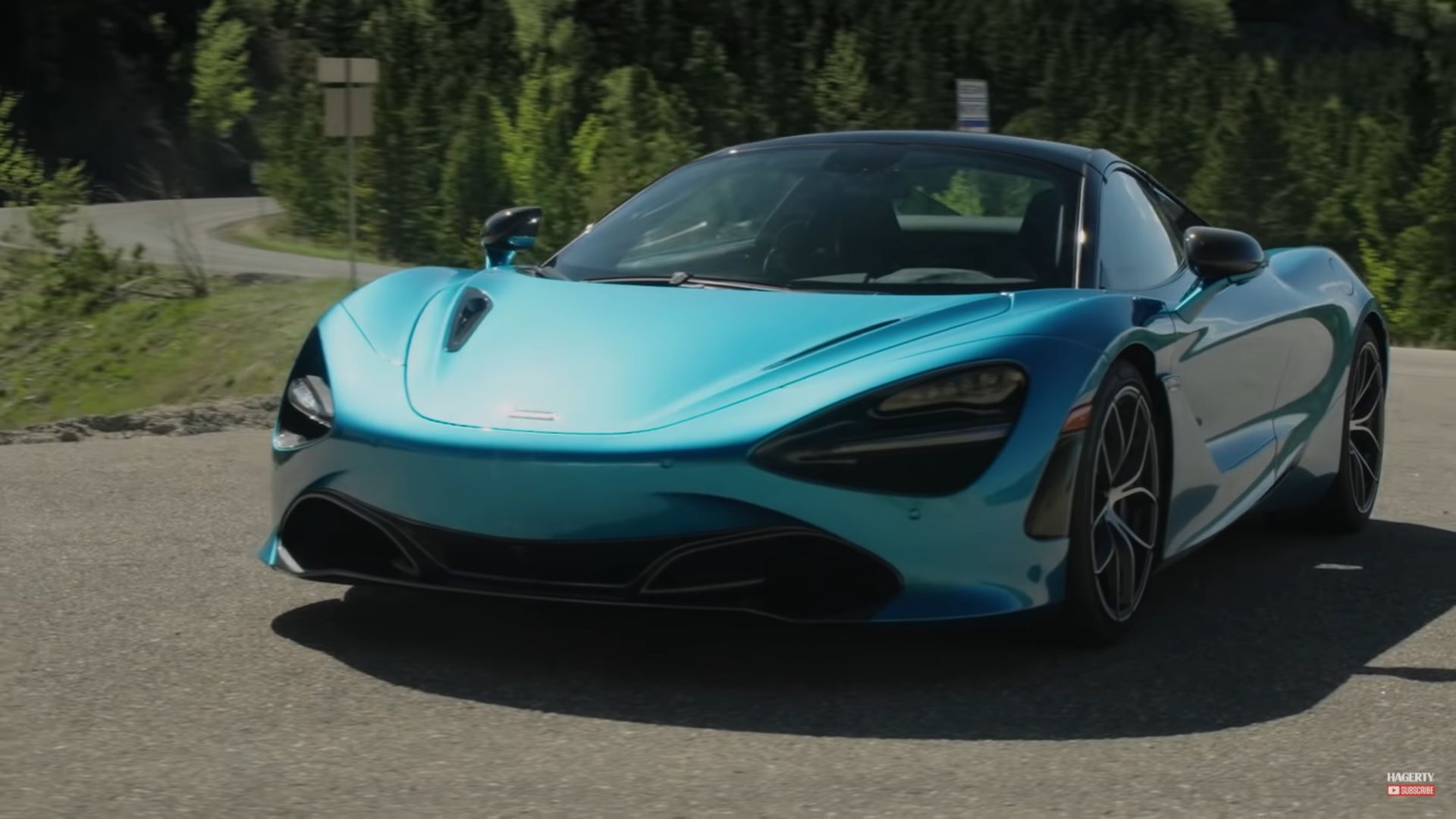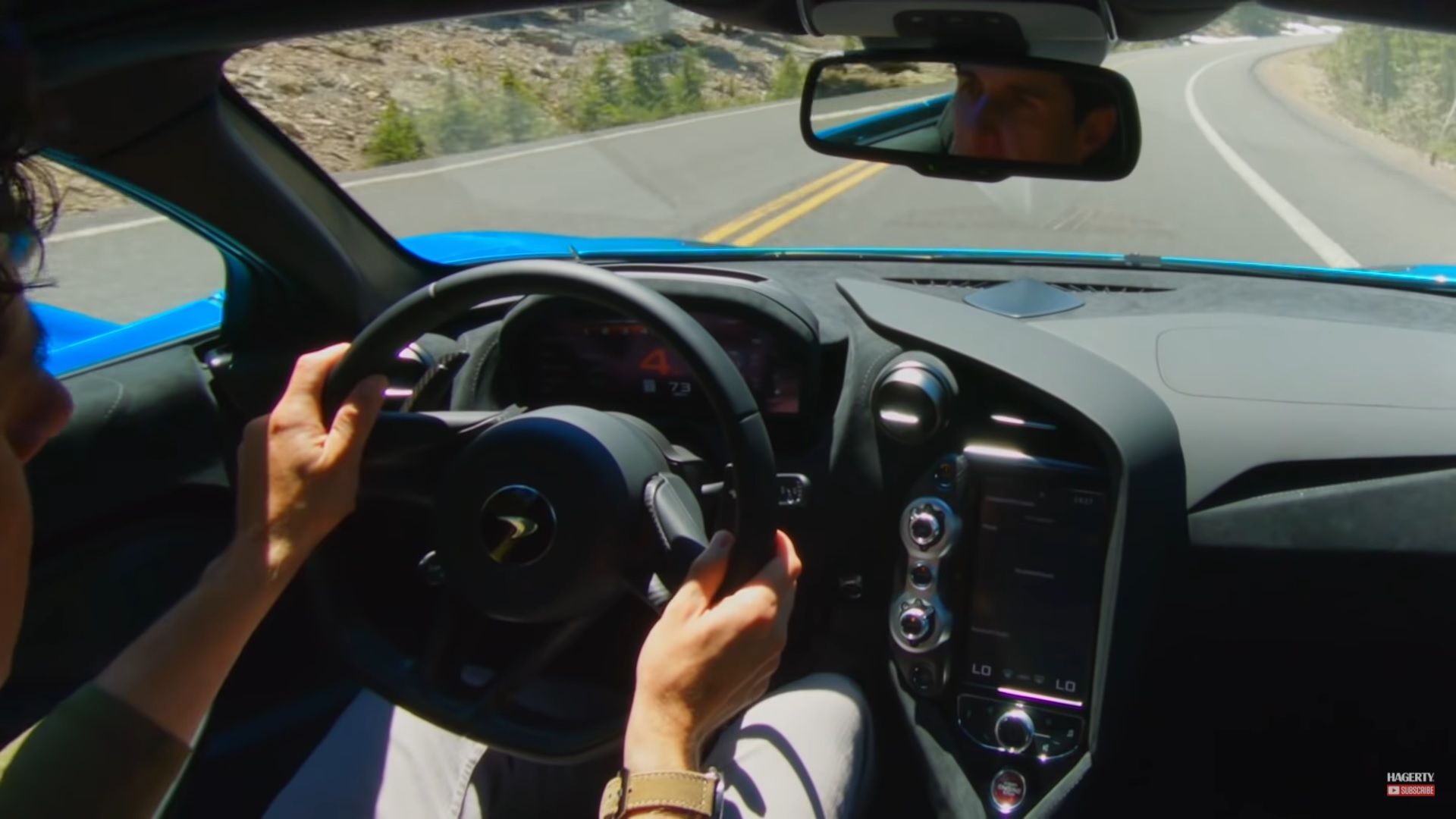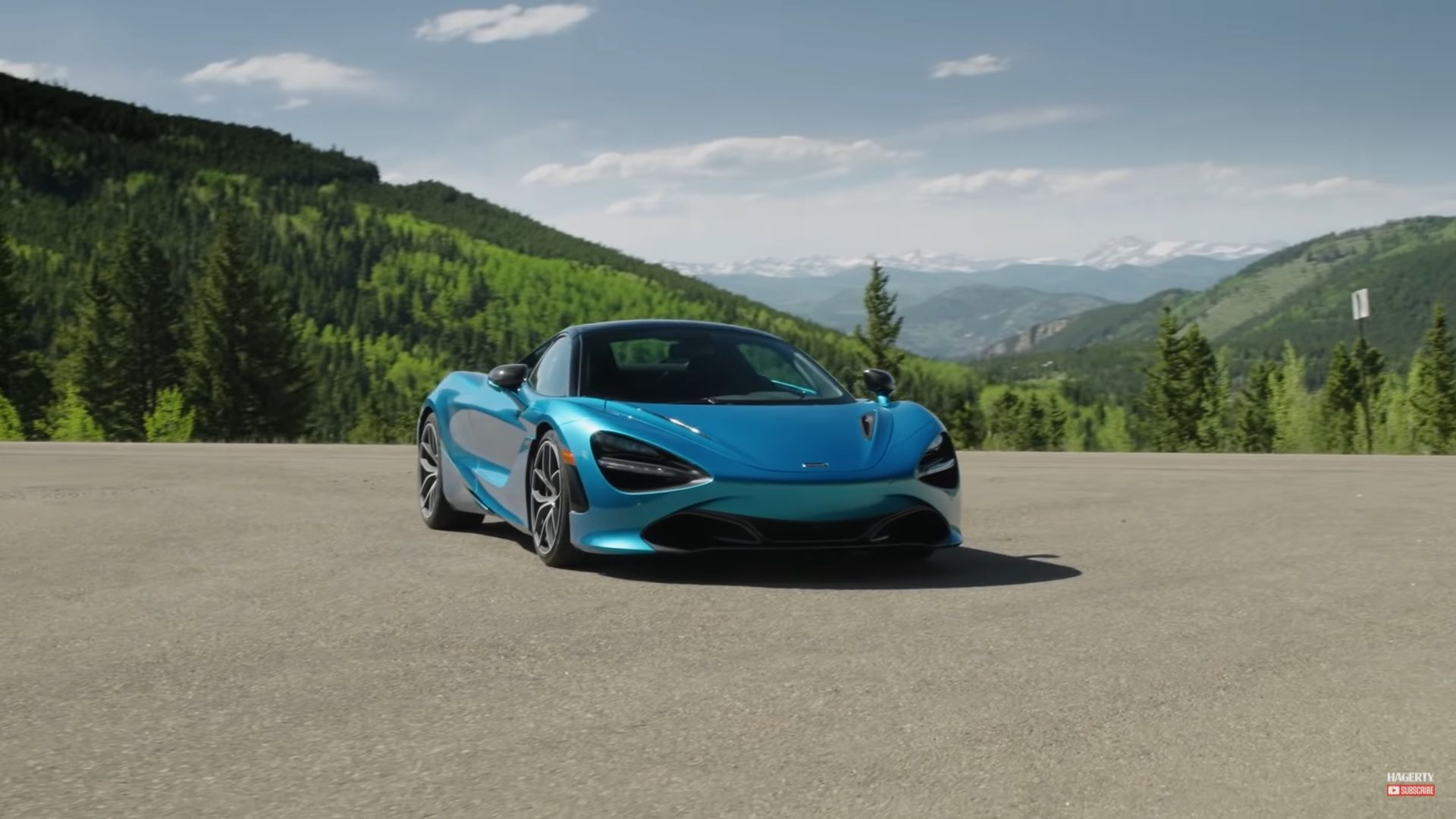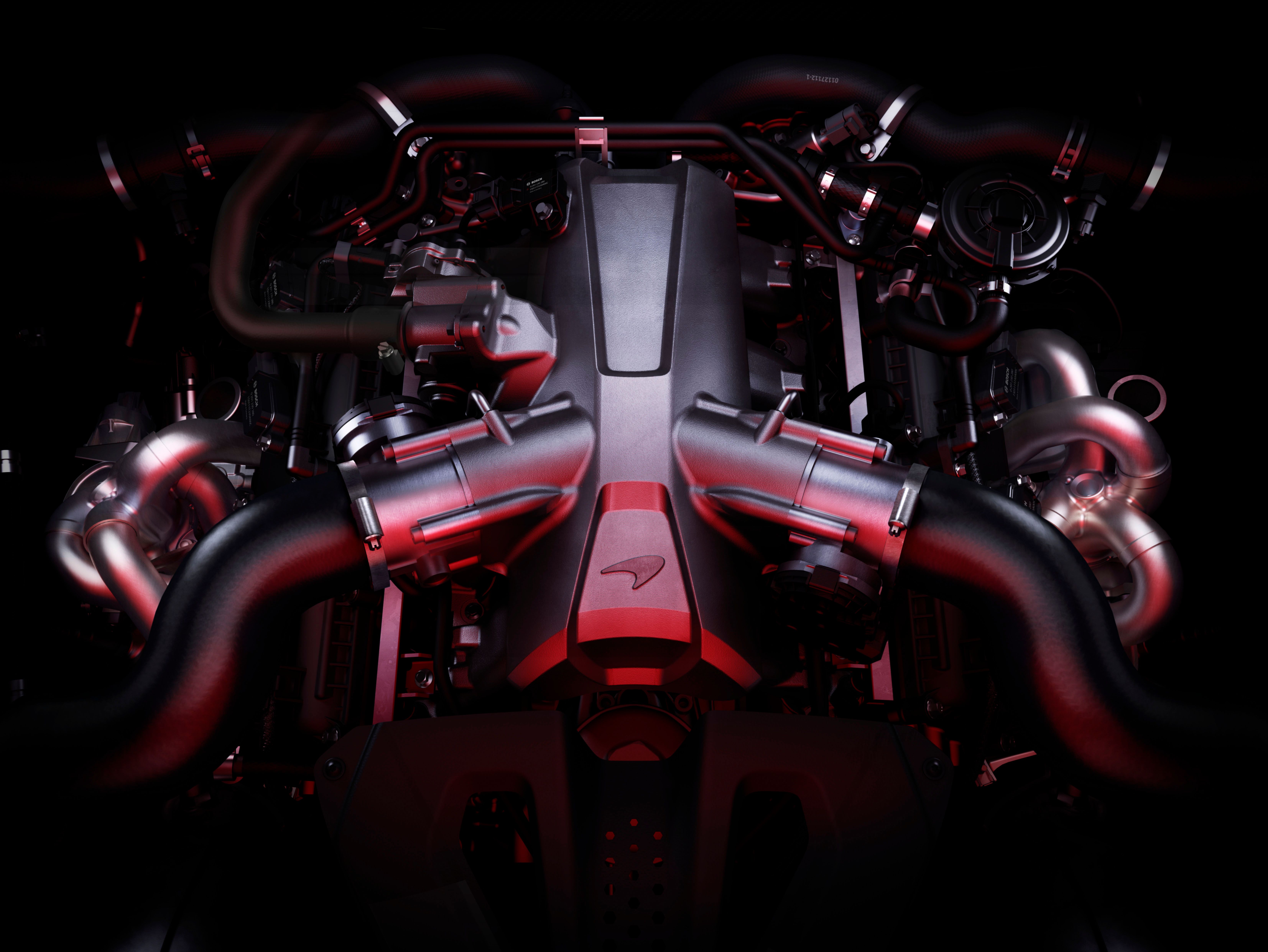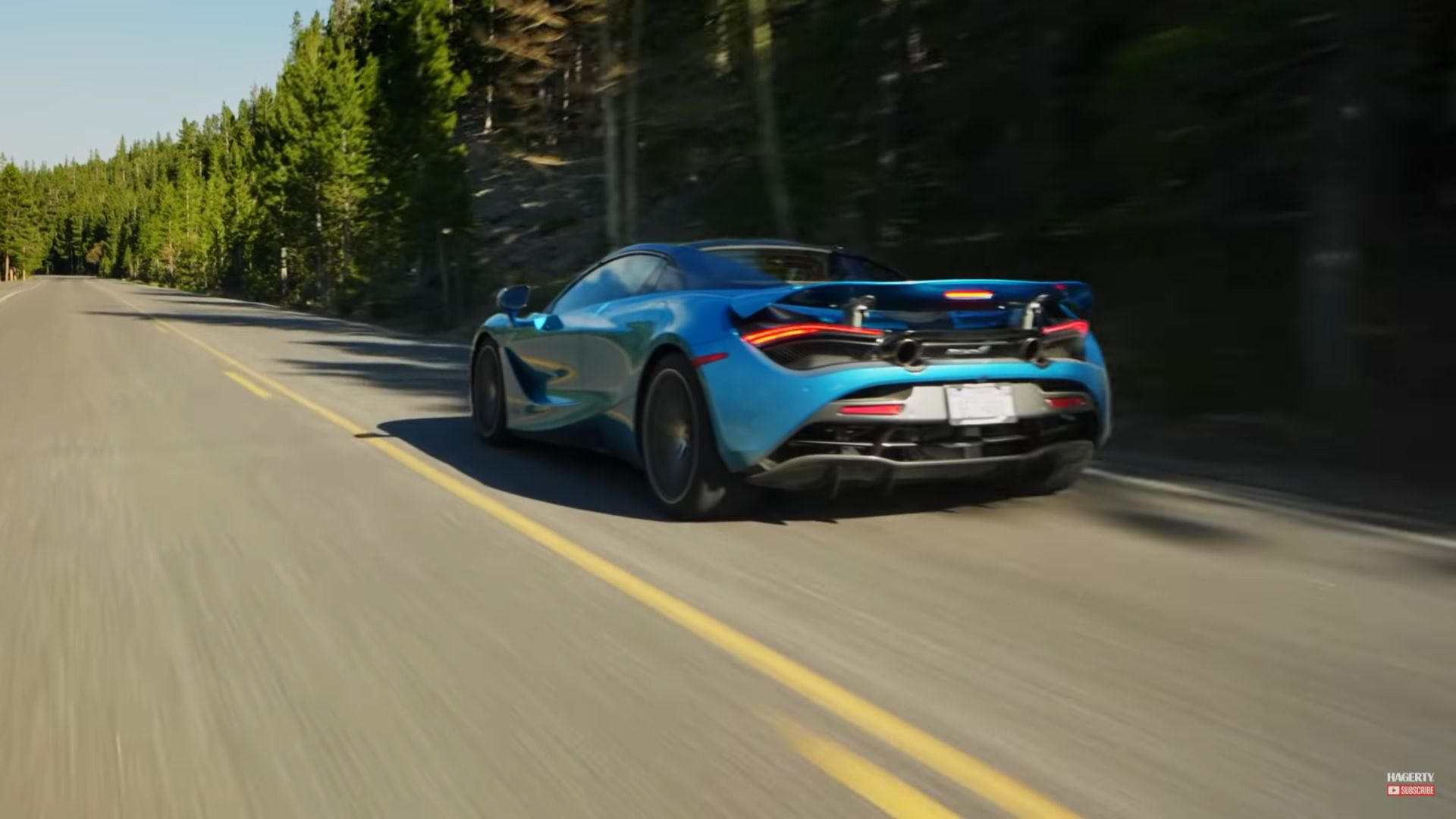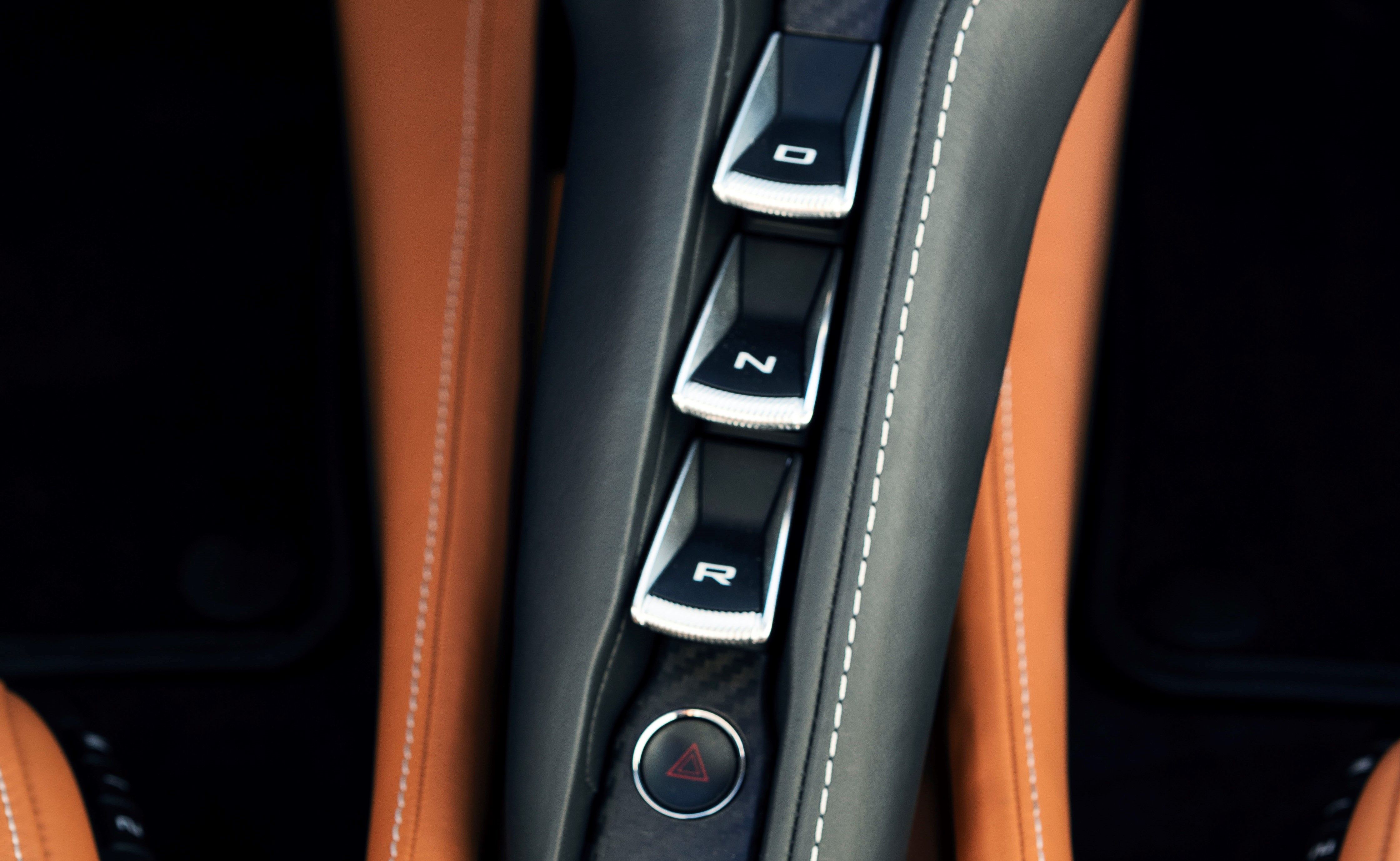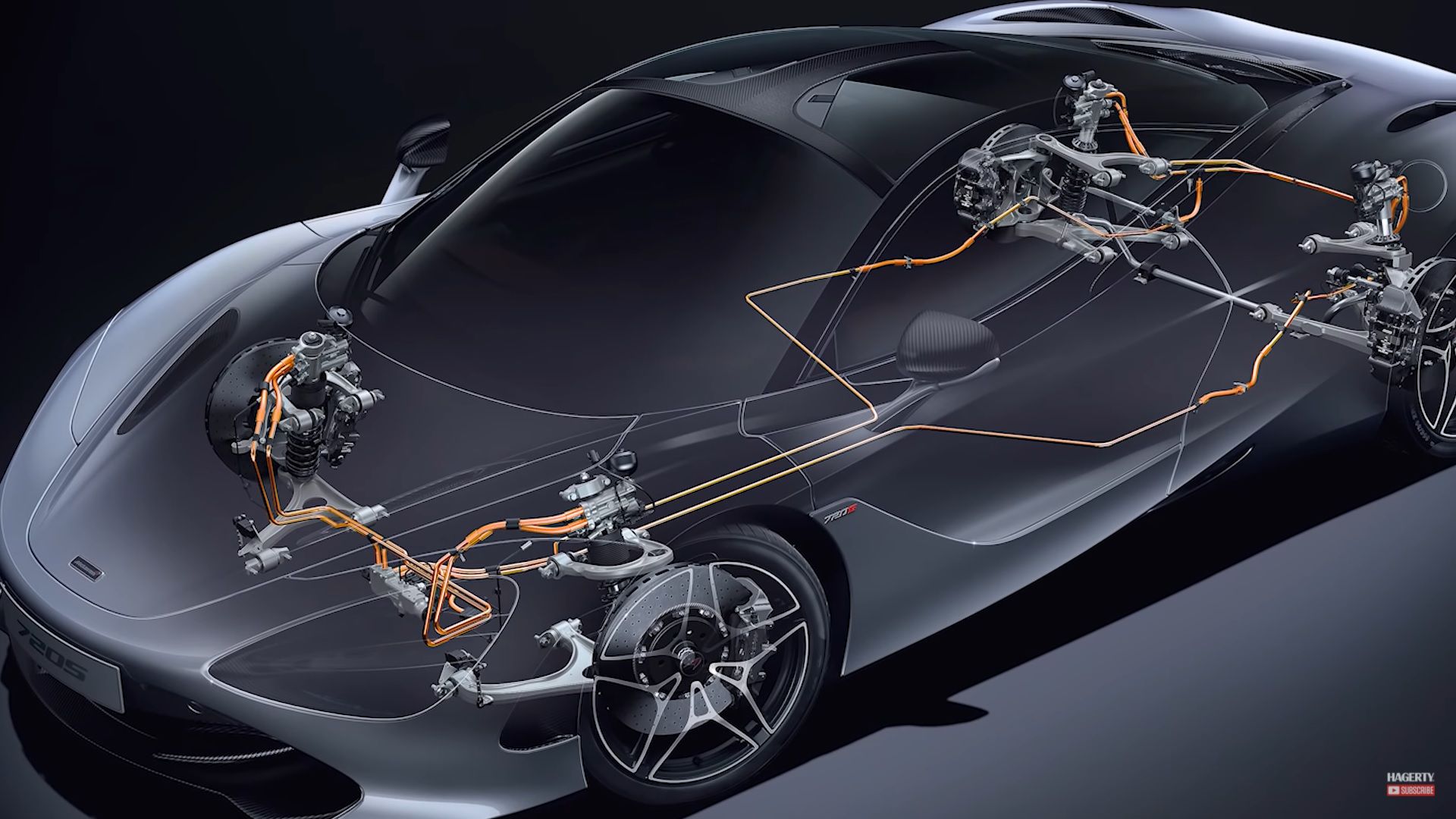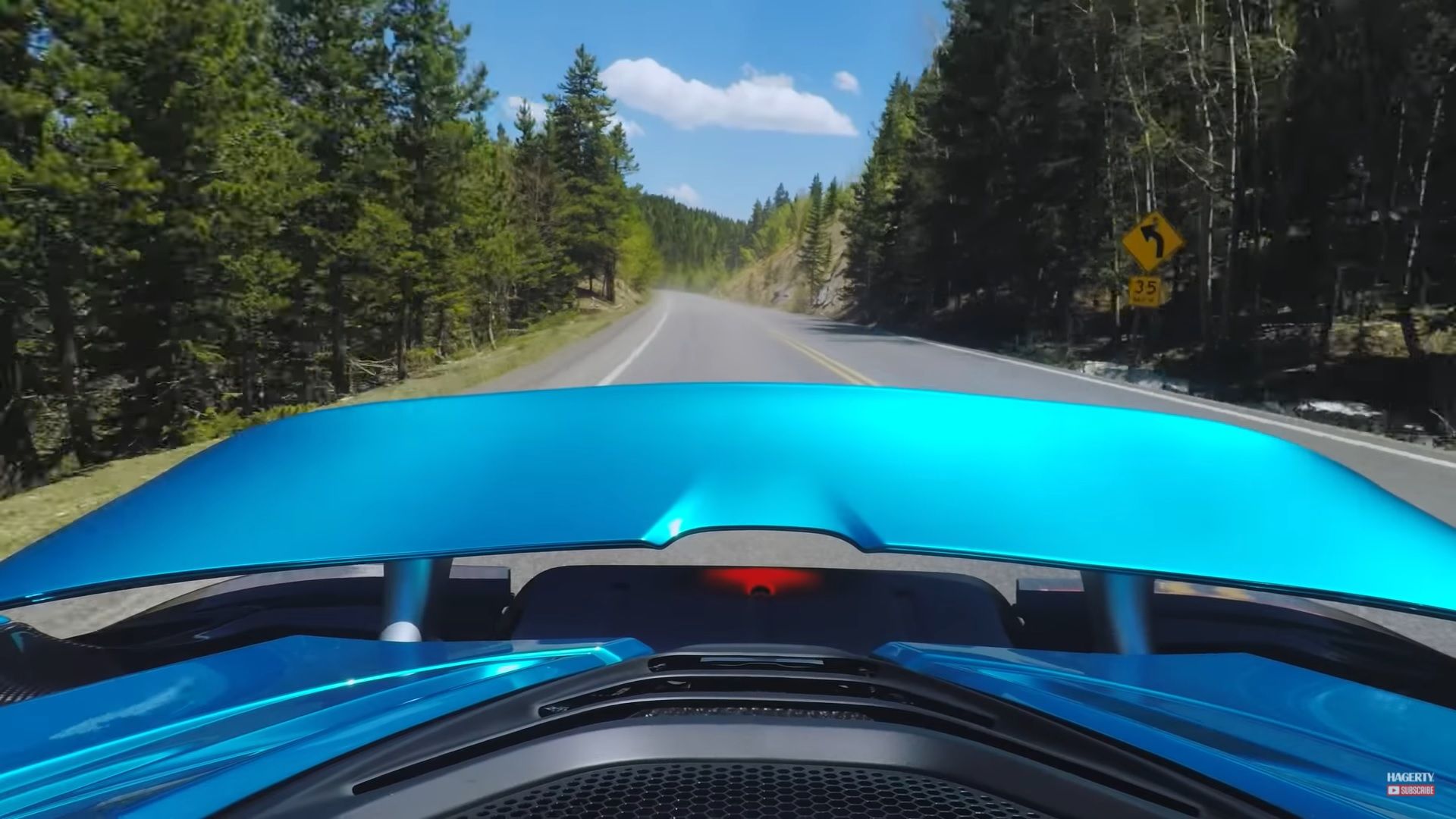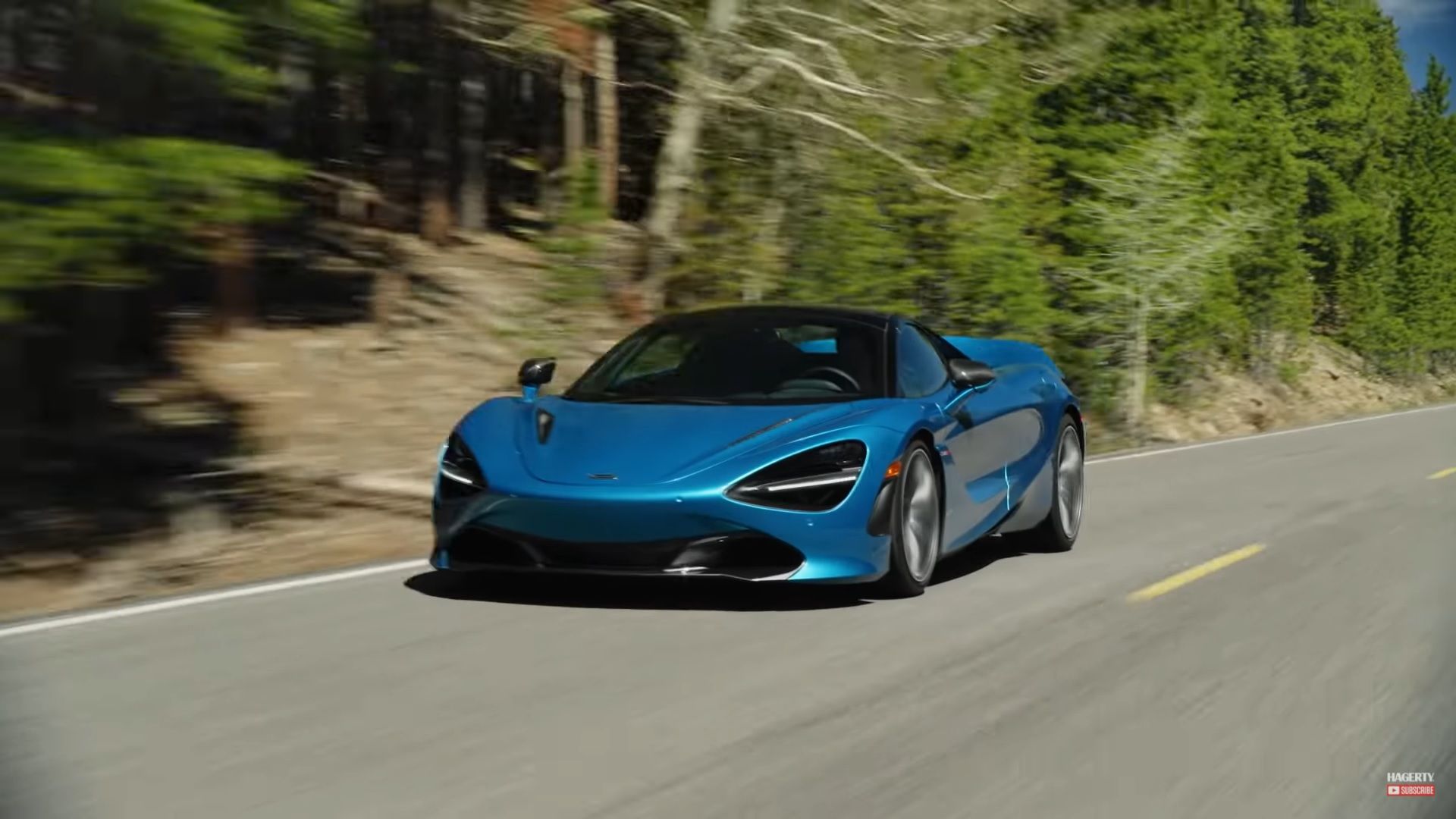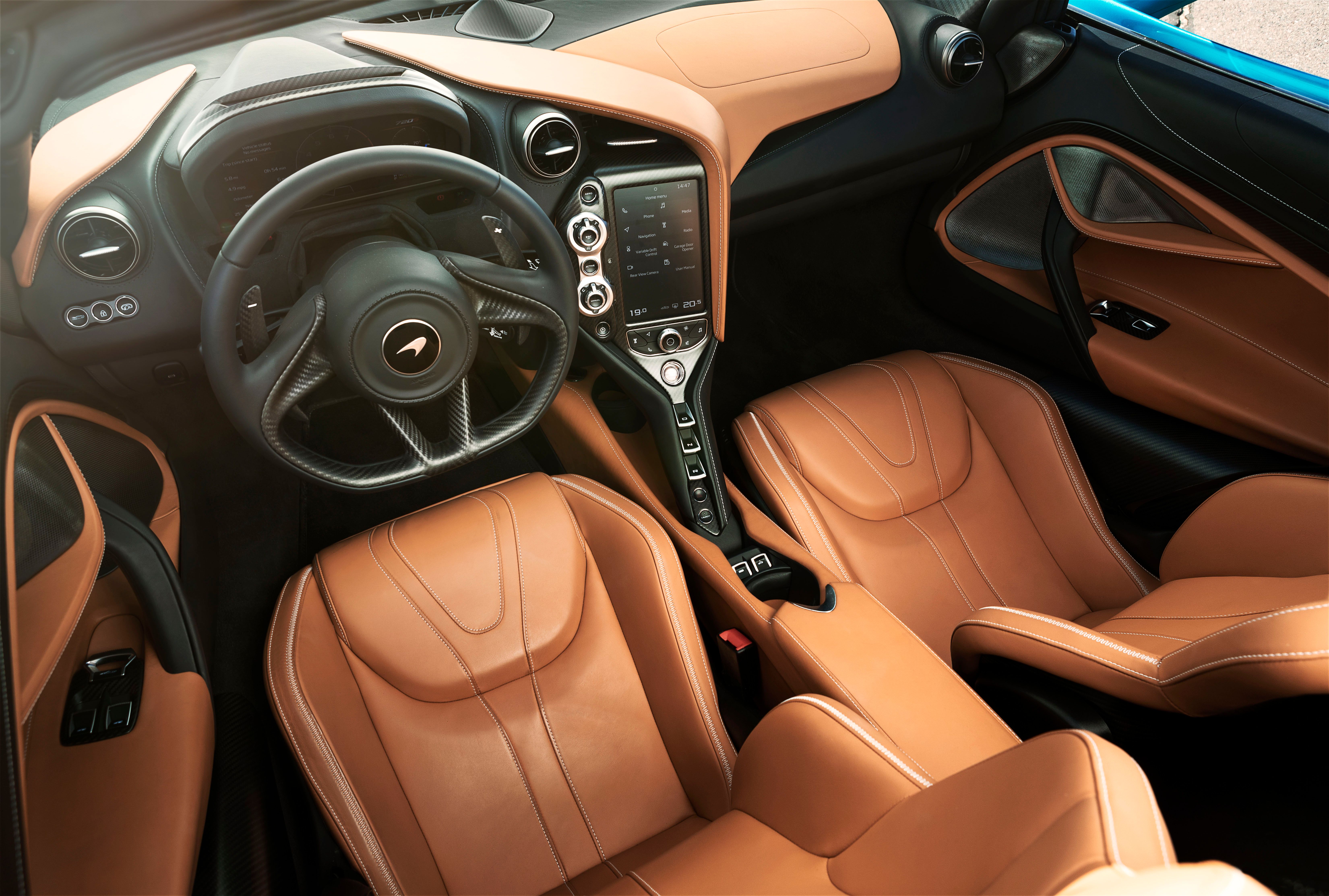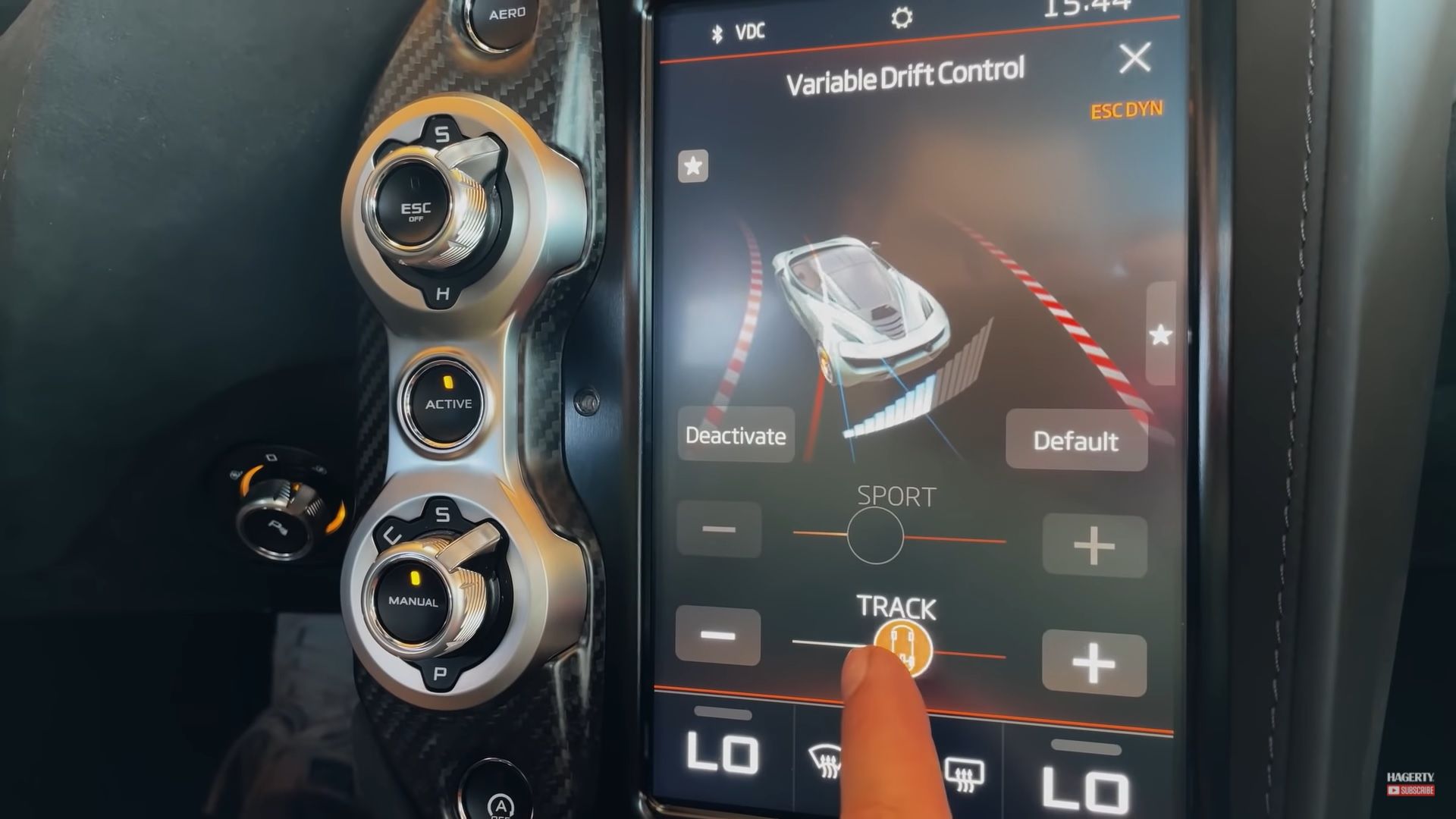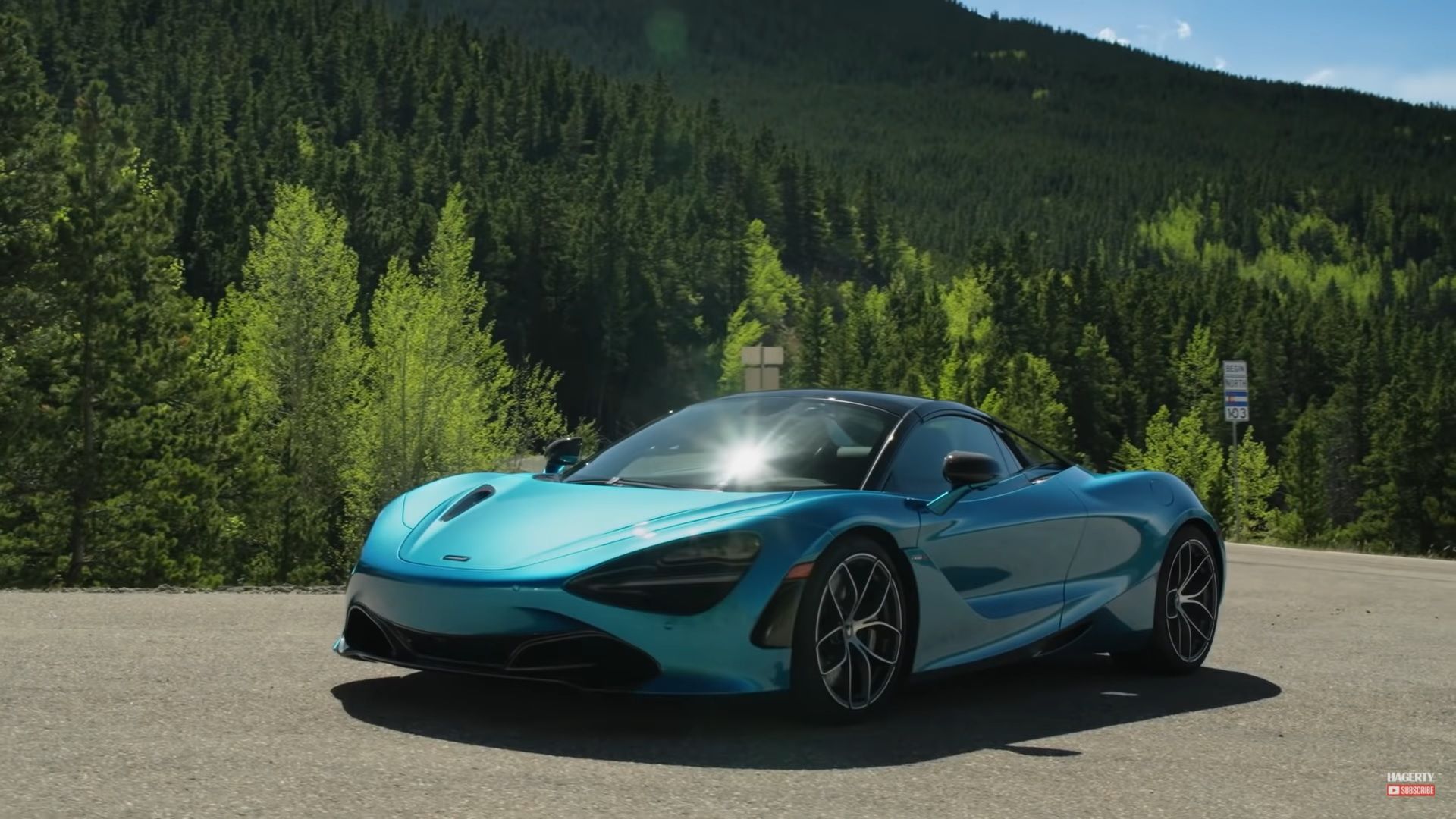McLaren’s lineup seems to be as diverse as ever, with 16 road-going versions currently on sale including the Spider versions. However, Hagerty has commissioned TheSmokingTire co-host, Zack Klapman, to explain why the McLaren 720 Spider is possibly the best supercar currently on sale. And what better way to lay down his argument than to take the mid-engine supercar for a drive on a great road with plenty of corners?
McLaren took its time developing the 720S
The 720S debuted in 2017, with the Spider version following two years later, in 2019. What you probably didn’t know is that the 720S was in development since before the 650S was officially unveiled, which was in 2014. While the 650S was more of a facelift MP4-12C, the 720S was going to be an entirely new model.
A great chassis that enhances visibility
“How?” I hear you asking.
Moreover, the strength of the chassis allowed the flying buttresses to be made out of glass, which greatly improves rear visibility – something that most supercars are severely lacking. There’s also the electro-chromatic roof, which by the touch of a button can be dimmed. It’s a $10,000 option, but Zack is adamant you should get it if you are buying a 720 Spider.
One of the lightest supercars currently on sale
McLaren boasts that their McLaren 720S has a dry weight of under 3,000 pounds (1,361 kg). However, Zack cleverly points out that the car cannot be driven without fluids, in which case the weight goes up to 3,128 pounds (1,419 kg) or 3,236 pounds (1,468 kg), for the 720 Spider.
The M840t engine
McLaren’s 3.8-liter twin-turbo V-8 is put to work in almost every McLaren model over the past few years. While the 650S still had it, the 720S upgraded to a 4.0-liter version of the same engine. This is essentially the same 3.8-liter engine, but with a bigger bore, lighter, and stronger rotating assembly – connecting rods, pistons, flat-plane crankshaft, and lighter turbochargers.
The result, as Zack describes it, is a more rev-happy engine that makes more power while being more efficient.
McLaren 720S Spider specifications
|
Engine configuration |
M840T engine, 4.0-liter twin-turbo V8, 3,994cc |
|---|---|
|
Drivetrain layout |
Longitudinal mid-engined, RWD |
|
Power bhp/kW @ rpm |
710/537 @ 7,500rpm |
|
Torque lb ft @ rpm |
568 @ 5,500-6,500rpm |
|
Transmission |
7 Speed SSG. Comfort, Sport and Track modes |
|
0 -97km/h (0-60mph) |
2.8 seconds |
|
0-100km/h (0-62mph) |
2.9 seconds |
|
0-200km/h (0-124mph) |
7.9 seconds |
|
0-300km/h (0-186mph) |
22.4 seconds |
|
0-400m / ¼ mile |
10.4 seconds |
|
Maximum Speed (RHT raised/RHT lowered) |
212mph/202mph |
Quicker than a Tesla P100 D
The Tesla seems to be killing it on the drag strip and making a point about EVs not being dull to drive. There are many videos in which the EV beats all sorts of cars, like the GT-R, R8, or the Hellcat. However, the McLaren 720S makes short work of the Tesla. While the mid-engine supercar falls slightly behind on the 0 to 60 mph (97 km/h) run, it reaches from 0 to 125 mph (200 km/h) in 8.0 seconds, while the Tesla needs 10.5 seconds. Moreover, at those speeds, McLaren continues to increase the gap between the two.
One of the best gearboxes currently on sale
The McLaren 720S engine is mated to a very quick seven-speed dual-clutch automatic, with manual mode. In fact, the transmission is able to shift so fast that it’s hard to pinpoint the shift points even with specialized equipment. Even in comfort mode, the DCT manages to shift in under 50 milliseconds, which makes it one of the quickest and most responsive gearboxes on sale today.
Clever suspension
Nowadays, pretty much all high-performance cars feature adaptive suspension. The McLaren 720S is no exception, as it also features adaptive dampers and springs. However, instead of anti-roll bars, McLaren engineers have utilized a hydro-pneumatic system, comprising of series of tubes that connect each wheel. Zack explains it as “an alien version of the system that connects the sinks in your house”.
It’s a very responsive system and when a wheel loses traction, fluid is sent to the other wheels accordingly, so that it stabilizes the car’s body in the best possible way, in order to retain maximum contact patch at all four corners. The result, as Zack explains, is the most comfortable and most stable car he has ever driven. And he has driven a thing or two.
Open differential for better drivability?
Whilst you would be right to expect a limited-slip differential on a high-performance vehicle, the McLaren 720S does away with it. Instead, it uses a brake-based system that utilizes an open differential. Ian Howshaw – Global Product Manager for the Super Series – explains that an LSD would add weight and complexity.
Instead, the system relies on torque-vectoring by braking – something we’ve seen on other cars, such as the Acura NSX. Essentially, you are using the parts that are already on the car, which eliminates the need for adding dedicated hardware. Moreover, the system was pioneered by McLaren’s F1 team.
Electro-hydraulic steering
Most new cars, nowadays, have made the transition towards electric power steering and some have done away with the physical connection altogether, by utilizing a steer-by-wire system. The McLaren 720S has a hybrid steering assist, which is both hydraulic and electric.
As Zack explains it “the electric motor can decide how much spin to give that hydraulic pump, which would then determine how much assistance it gives you”. What this does is give you speed-sensitive steering, as well as great feedback and responsiveness.
Driver-centric interior
The interior is driver-focused, but still has all amenities you need for a long trip. The steering wheel’s single purpose is to steer the car, which is why the 720S, like other McLaren models, lacks any buttons on it.
There is also an adequate amount of physical buttons, allowing for quick access to all vital functions, and everything is at a hand’s reach. And let’s not forget the gauge cluster, which in sport mode rotates and switches to a more simplified design, reminiscent of Robo Cop’s visor.
Great value for money?
What exactly do you get when you buy a McLaren 720 Spider? In addition to what we mentioned above, you get “a coupe, a convertible, and something in between”, especially if you opt for the electro-chromatic roof. The 720 Spider starts at around $350,000. That’s without options, and this particular one has about $40,000 worth of them.
One of the last non-electric supercars
For better or worse, electrification has wormed its way into high-performance cars. So much so that almost all carmakers are currently transitioning to mass-electrification. With this in mind, the McLaren 720S is one of the last cars that does not feature any form of electrification in its propulsion. In addition, it’s one of the last modern-day analog supercars and sadly, the days of such thrilling vehicles may be numbered.
The video ends with famous drift competitor, Dai Yoshihara, putting the 720 Sider through its paces on a race track, with Zack in the passenger seat. The professional driver praises the car’s driving characteristics, as he engages in both grip driving and some epic slides. “It’s like a real race car”, Dai Yoshihara says. If that isn’t praising enough, I don’t know what is. Moreover, it’s a race car that doesn’t burden you with loads of tech and more importantly, it has a rev-happy, twin-turbo gem of a V-8 engine.

